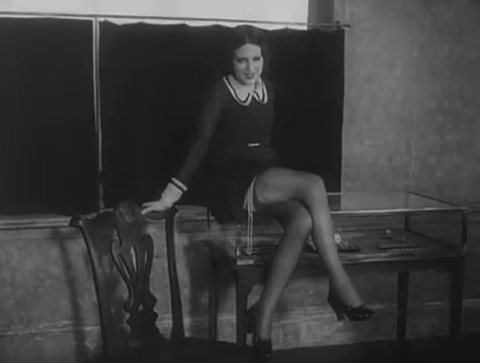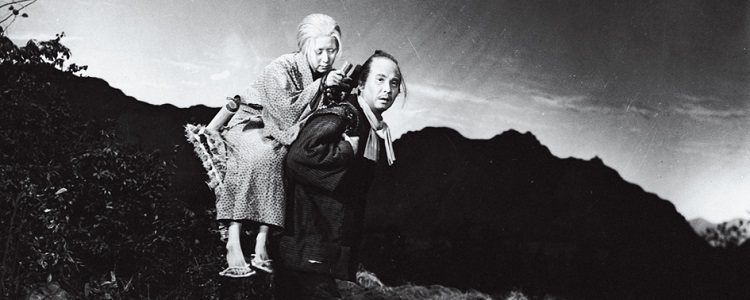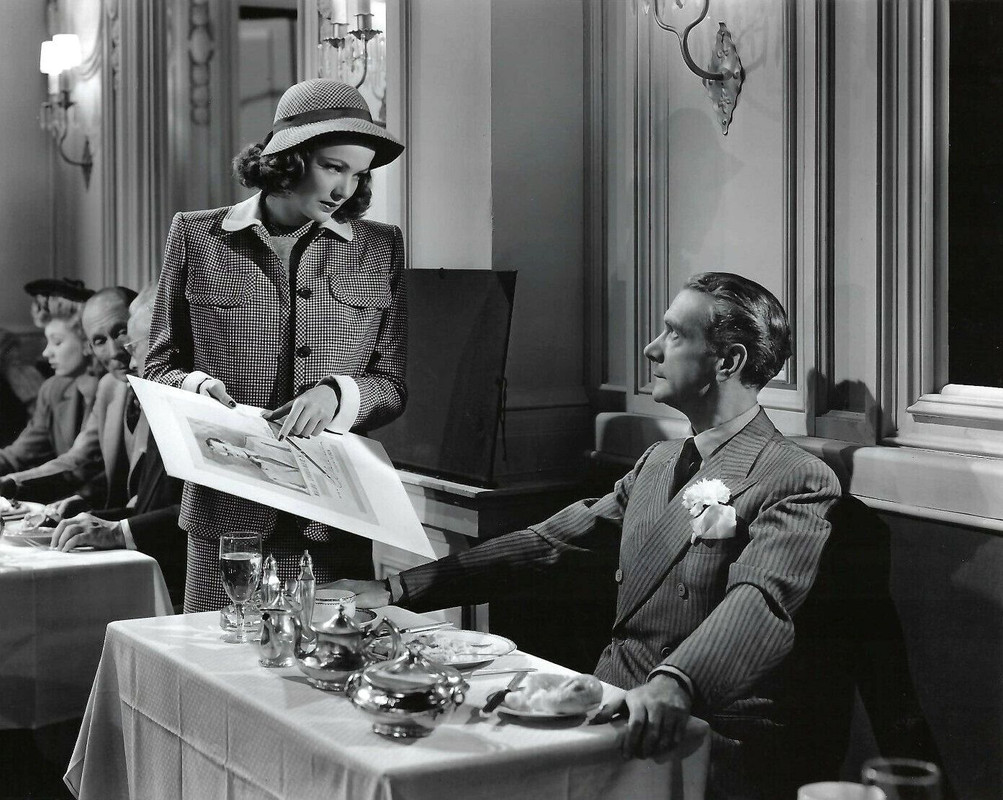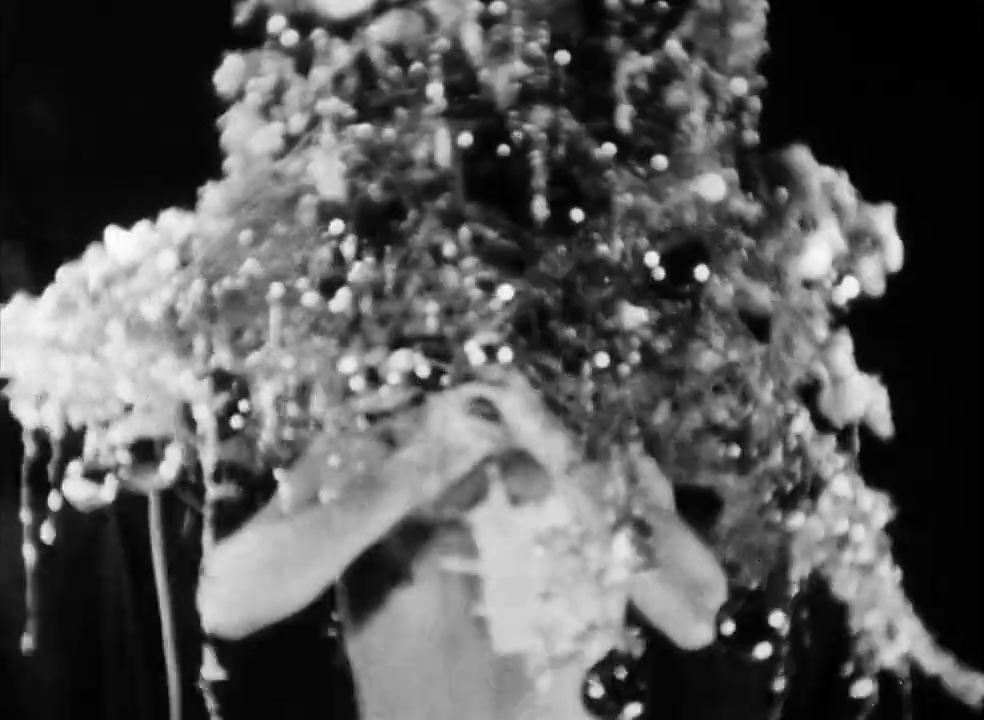La perle [The Pearl] (Henri d'Ursel, 1929)
Dec
15
National Wear Your Pearls Day

A giddy Kissa Kouprine as the jewellery salesgirl. A pearl necklace jauntily dangles from her suspender. DP: Marc Bujard.
Pearls worn for National Wear Your Pearls Day (USA). No one said those pearls were to be worn in the obvious place.
“Come Senators, Congressmen,
Please heed the call,
Don't stand in the doorway,
Don't block up the hall”Crisis: Behind a Presidential Commitment (Robert Drew, 1963)
Dec
14
Alabama Day

Bobby on the phone, seen from the back. DP: Gregory Shuker.
Alabama Day: filmed in Alabama.
In what he dubbed “Stand in the Schoolhouse Door”, George Wallace, Alabama governor, blocked Black students from walking into the University so he could uphold his inaugural promise of “segregation now, segregation tomorrow, segregation forever”. This prompted a national crisis, resulting in the President issuing Executive Order 11111, making the #NationalGuard step in.
– Bob Dylan, The Times They Are a-Changin (1964)
In a then-groundbreaking new documentary format, Robert Drew and associates followed President John F. Kennedy and Attorney General Robert F. Kennedy during the crisis. And they filmed everything; from tense phone calls, private discussions, private moments (one of RFK's daughters on the phone with a bemused “Kerry”, Dept. Nicholas Katzenbach), and many, many shots in which nothing – which is everything – is said.
“America is as psychotic as it is powerful and violence is the only goddamn thing that will command your attention.”Punishment Park (Peter Watkins, 1971)
Dec
13
U.S. National Guard Birthday

Military men arresting one of the dissidents. A man in black uniform and white helmet interacts directly with the camera c.q. the viewer. DPs: Joan Churchill & Peter Smokler.
It's the U.S. National Guard Birthday (USA) and the National Guard shows up.
A European camera crew follows a diverse group of American minor dissidents – pacifists, feminists, communists – who are given the choice to spend decades in federal prison, or three days in Bear Mountain Punishment Park, chased by National Guardsmen and law enforcement officers. If they manage to capture the American flag, they're free to go.
– Defendant Lee Robert Brown
While the washed-out 16mm footage and references to #Nixon may tell you otherwise, Punishment Park remains a gut-punching portrait of a timeless America.
“Have you seen Mr Tavernier tonight?”Ascenseur pour l'échafaud [Elevator to the Gallows] (Louis Malle, 1958)
Dec
13
croissants

Mr Tavernier (Maurice Ronet) taking a bite out of a croissant while dialling a number in a lively French café. A blonde behind him shows an interest. DP: Henri Decaë.
“Can you smell the garlic?”Garlic Is as Good as Ten Mothers (Les Blank, 1980)
Dec
12
National 12 Hour Fresh Breath Day

Three representatives of the garlic festival. Their tees read: THE GARLIC TO SHARE WITH A FRIEND, MINE DOESN'T STINK, and WE LEAVE YOU BREATHLESS. DP: Les Blank.
Someone has bad breath on National 12-hour Fresh Breath Day (USA)
“When he shows the 1978 film Always for Pleasure, about the food, music and indigenous culture of New Orleans, [Les Blank] has been known to whip up a pot of red beans and rice in the back of the theatre. [cont. below]
– Alice Waters. During screenings, the audience would reply with “YES!”
“At presentations […] Blank can occasionally be spied tossing several heads of garlic into a toaster oven so that the aroma wafts over the audience at just the right mouth-watering moment.” (via)
“This winter… I'm going to the mountain. My mother went to the mountain, as did the mother-in-law of our home. So I have to go too.”楢山節考 [Narayama-bushi kō / The Ballad of Narayama] (Keisuke Kinoshita, 1958)
Dec
11
International Mountain Day

Tatsuhei (Teiji Takahashi) with his mother Orin (Kinuyo Tanaka) in a bamboo carrier on his back. She's combing his hair. Around them the mountain range. DP: Hiroshi Kusuda.
Travel mountains on International Mountain Day
A starving community has come to the agreement that the elders approaching the age of seventy are to be carried up Narayama mountain to die. The day prior to the mountain's festival, sixty-nine year old Orin prepares to leave, carried by her son Tatsuhei.
– Orin
In Keisuke Kinoshita's highly stylised 楢山節考, the arguably cruel (and most likely fictional) practice – of 姥捨て [ubasute, abandoning an old woman] – is superbly abstracted. Narration, dramatic lighting, colour filters and very obviously a soundstage underline that what we're watching is not a film, but a kabuki play.
“I don't use a pen. I write with a goose quill dipped in venom.”Laura (Otto Preminger + Rouben Mamoulian, 1944)
Dec
11

Laura Hunt (Gene Tierney) interrupts arsine newspaper columnist Waldo Lydecker (a delicious Clifton Webb) with her designs during his lunch. DPs: Joseph LaShelle & Lucien Ballard.
– Waldo Lydecker
“Feelings unspoken are unforgettable.”Nostalghia [Nostalgia] (Andrei Tarkovsky, 1983)
Dec
10
Worldwide Candle Lighting Day


Hands shield something on stone steps. In the next shot, with the hands withdrawn, we see a small, lit candle. DP: Giuseppe Lanci.
Lit a candle on Worldwide Candle Lighting Day (note: the link contains references of child death).
– Andrei Gorchakov
Holubice [The White Dove] (František Vláčil, 1960)
Dec
9
Official Lost And Found Day

Michal (Karel Smyczek) finds the white dove perched on a sculpture. The artwork depicts a faceless boy. DP: Jan Čuřík.
Something is lost and found on Official Lost and Found Day (USA)
“Inflammable desires dampened by day under the cold water of consciousness are ignited that night by the libertarian matches of sleep, and burst forth in showers of shimmering incandescence.”Fireworks (Kenneth Anger, 1947)
Dec
8
National Christmas Tree Day

The Dreamer (Kenneth Anger) holding a tinsel-decked Christmas tree in front of his naked upper body. The scene appears to foreshadow Yvonne Marquis getting into her silver dress in Anger's Puce Moment (1949).
A Christmas tree for National Christmas Tree Day (USA)
In August 1942, a Mexican-American man with a broken finger was found semiconscious near Sleepy Lagoon, Ca.. By association, a group of young Latinos was put on trial. This spark, mere months after Roosevelt sent thousands of Japanese Americans to concentration camps and fuelled by Cold War paranoia, eventually set off the Zoot Suit Riots.
Zoot Suiters or Pachucos and other “outsiders” like African, Italian and Filipino Americans, were viciously attacked by Anglo-American #sailors. Those suits, all that fabric, this colourful extravagance, they cried out, were hampering the war effort.
– The Dreamer
The Dreamer, Anger, dreams of a similar violent attack. The sadism is harrowing, filmed with such exquisite eye that it's impossible to look away. Blood finds its way out, pulsating and spurting. Ambiguous glances. A hand, no finger. A young man awakes, is born. The dreamer is still asleep.